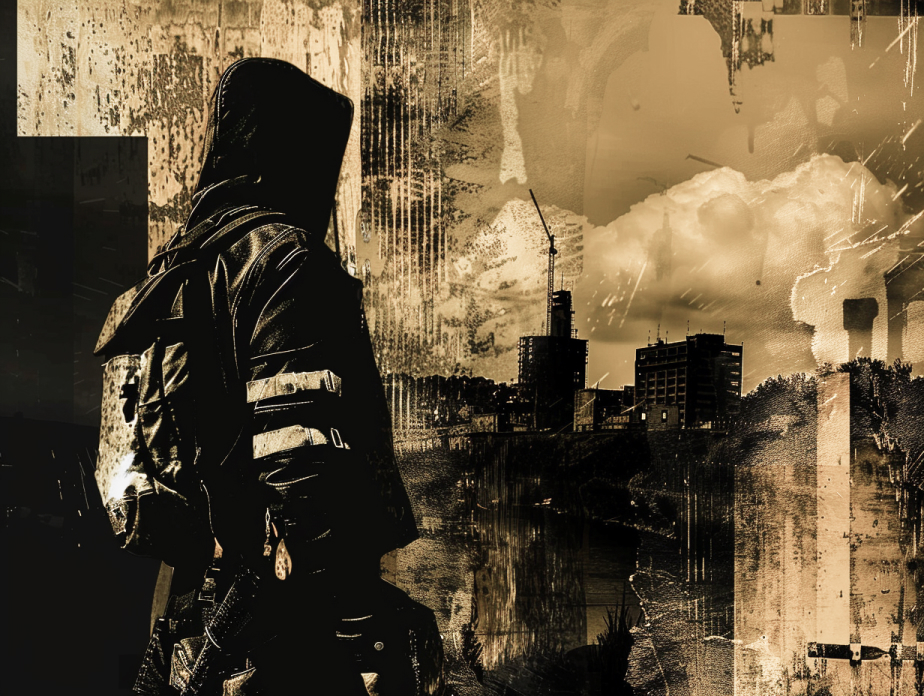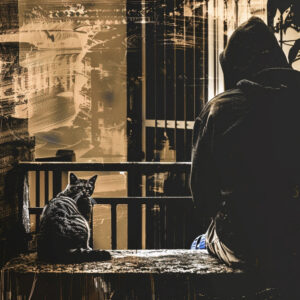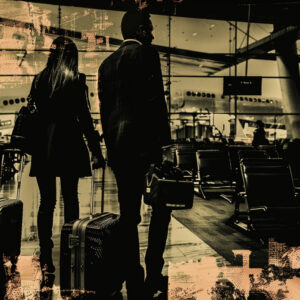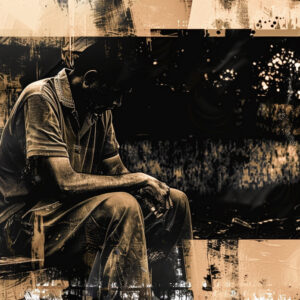They say: The farther you are from humans, the more the bonds of love increase…

In his novel, “End of a Brave Man”, the writer Hanna Minah used the character “Mofid Al-Wahsh” to diagnose the contradictions of the human soul, which is full of the struggle between the potentials of good and evil. The writer worked on embodying the character of “Mofid” with depth and professionalism to shed light on the conflict represented by human nature. For example, the simple character “Mofid” and his naive village thinking led him to involve in ill-considered conflicts, which had unpleasant consequences for his behavior.
The writer first painted the initial image of Mofid as a negative person towards his society, as he is the son of a harsh environment that forced him to grow up under a father who has no mercy. Mofid was beaten brutally, and this was a main motive for his rebellion against his difficult reality and the rules of values and norms in revenge for his ego. The image of the mother appeared kind and affectionate, but at the same time she was unable to provide any help to her son, as she was defeated and unable to dissuade the father from his actions, all she did was keeping him away from the house and advising and guiding him.
As for the image of the initial community of Mofid “the village”, the writer embodied it through the characters of “the mukhtar and the teacher”. The mukhtar was a cruel man, and he carried out a useful punishment in front of the villagers in a cruel way, insulting him, and considering what he did an intentional crime. The same applies to the teacher, who was very negative in dealing with him and constituted a nightmare for Mofid, and the school became in his life a place like a prison because of the insults, expulsion and punishment he was subjected to. Therefore, the first community (the village) in Mofid’s life was a destructive factor and pushed him to homelessness, as he fled from the village, which was a source of pain and cruelty.
Mofid then moved to live in the city, thinking that it was his refuge, which he lost early, but it was harsher than his life in the village, and one of his mother’s relatives appeared in his life called “Ibrahim Al-Shankal”, who began to direct him to a new life that depends on mental abilities, the body is in the city alone not enough. The woman constituted a pivotal turning point in Mofid’s life, after he met his lover, “Labiba.” She was able to awaken within him the human sense of love, as he began to think about stability and association and the search for a stable job. Imprisonment has contributed to the formation of the active self and an important factor of education for Mofid. After he was imprisoned, he met Professor Maher, who taught him to read which, for Mofid, was a key that he tried not to lose as he did at school. Mr. Maher planted the seeds of goodness and nurtured them within a useful, and also taught him some important intellectual skills.
Mofid could not maintain these principles for long, so he soon returned to the life of vagrancy, theft and the negative self in which he indulged, and became a port robber, and made himself many enmities. Mofid returned to prison again, after he wreaked havoc in the port, and there in prison he contracted diabetes, which led to the cutting of his legs; He lost his ability to walk, and here despair tightened his grip on Mofid, until Ibrahim Al-Shankal appeared again, and was able to get him out of what he was in, but his enemies did not leave him alone, so they worked to tighten the noose on him, until he killed one of the officers “Sergeant Zureik” and ended his life committed suicide.
Ayman Zaidan gave us a lesson in the art of acting, as he excelled in presenting a complex character that combines the seeds of good and evil at the same time. This is human nature with its contradictions, but in the case of Mofid, the (negative self) outperformed the positive self, because of the acquired ideas inherited from childhood, which formed Behaviors accompanied Mofid throughout his life. Perhaps the most beautiful thing that this dramatic work left in us were the questions that revolved in our minds about “male education” and its negative impact on the upbringing of children, and about the issue of good and evil in our innermost being as human beings and ourselves in particular.
The director of the work “Najdat Anzour” focused in his epic “The End of a Brave Man” on the social and psychological dimension of the character “Mofid”, through a journey that contained many explicit and implicit facts about harsh social systems on its members. The end was just as the hero of the work lived it, painful and full of sadness among crashing waves that swept the lives of people who were like victims in backward societies, and this sadness we felt still accompanies us to this moment whenever we watch the last scene of a useful death, which everyone considered, not only the director, “the end of a brave man.”. Courage is the mystery that the director tried to pass on to his viewers through a scenario and drama that was and still is more beautiful than fiction. On the other hand, the director tried to portray the importance of teamwork and belonging, which he strongly rejected, as he believed in individual work and insisted on applying it in the immersive stages of his life.



